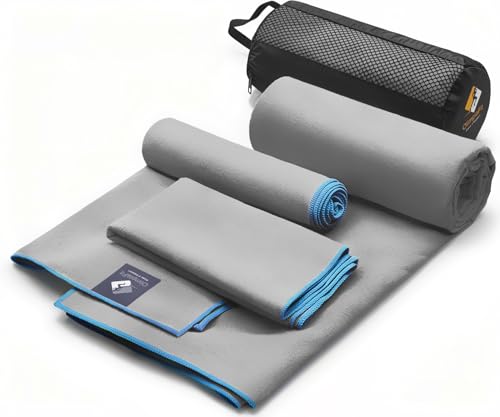Wetsuit chafing can be a real pain, quite literally. It can cause discomfort, irritation, and even lead to open wounds. If you’re an avid swimmer, you know how important it is to have a well-fitted wetsuit, but even the best wetsuit can cause chafing. Fortunately, there are some simple steps you can take to prevent and treat wetsuit chafing.

Understanding Wetsuit Chafing is the first step towards preventing and treating it. Chafing occurs when your wetsuit rubs against your skin, causing friction. This friction can lead to irritation, redness, and even open sores. It’s important to select the right wetsuit that fits you well to prevent chafing. A wetsuit that is too loose or too tight can cause chafing. However, even a well-fitted wetsuit can cause chafing if it’s not treated properly.
Key Takeaways
- Understanding wetsuit chafing is crucial to preventing and treating it.
- Selecting the right wetsuit that fits you well can help prevent chafing.
- Preventive measures such as using anti-chafe balm and washing your wetsuit can help prevent chafing.
Understanding Wetsuit Chafing
https://www.youtube.com/watch?v=mtutAqq47R4&embed=true

Wetsuit chafing is a common problem that can cause discomfort and irritation to your skin. It occurs when your skin rubs against the seams or neoprene material of your wetsuit, causing friction that can lead to redness, soreness, and even blisters. In this section, we’ll explore the causes of chafing and the common areas where it occurs.
Causes of Chafing
Chafing is caused by friction between your skin and your wetsuit. This can happen when your wetsuit is too tight or too loose, or when you’re wearing it for an extended period of time. The friction can also be caused by the seams of your wetsuit rubbing against your skin. Additionally, the neoprene material of your wetsuit can cause chafing if it’s not properly lubricated.
Common Chafing Areas
Chafing can occur in several areas of your body when you’re wearing a wetsuit. The most common areas include your arms, thighs, nipples, crotch, groin, and legs. These areas are prone to chafing because they’re where your skin comes into contact with the seams and neoprene material of your wetsuit.
To prevent chafing, it’s important to make sure your wetsuit fits properly and is well lubricated. You can use a specially designed anti-chafe balm or a gentle detergent to lubricate your wetsuit and reduce friction. It’s also a good idea to wear a rash guard or other protective clothing under your wetsuit to reduce the amount of contact between your skin and the neoprene material.
In summary, understanding the causes of wetsuit chafing and the common areas where it occurs can help you take steps to prevent it. By properly fitting your wetsuit, lubricating it with anti-chafe balm or detergent, and wearing protective clothing, you can reduce the risk of chafing and enjoy a comfortable and enjoyable swim.
Selecting the Right Wetsuit
https://www.youtube.com/watch?v=ASm5iyasR3o&embed=true
When it comes to treating wetsuit chafing effectively, selecting the right wetsuit is the first and most important step. A wetsuit that fits well and is made from high-quality materials can significantly reduce the risk of chafing and irritation. In this section, we will discuss the importance of proper fit and material and quality considerations when selecting a wetsuit.
Importance of Proper Fit
One of the most important factors to consider when selecting a wetsuit is proper fit. A wetsuit that is too loose or too tight can cause chafing and irritation. A wetsuit that is too loose can rub against your skin, while a wetsuit that is too tight can restrict movement and cause friction.
To ensure a proper fit, you need to consider the size, brand, and flexibility of the wetsuit. Different brands may have different sizing charts, so be sure to consult the manufacturer’s sizing chart before selecting a wetsuit. Additionally, the flexibility of the wetsuit is important. A more flexible wetsuit can conform to your body and reduce friction.
Material and Quality Considerations
The material and quality of the wetsuit are also important factors to consider when selecting a wetsuit. A wetsuit made from high-quality materials can reduce the risk of chafing and irritation. Neoprene is the most common material used in wetsuits, but the quality of the neoprene can vary.
When selecting a wetsuit, look for one that is made from high-quality neoprene. High-quality neoprene is more flexible and durable than low-quality neoprene. Additionally, consider the thickness of the neoprene. Thicker neoprene provides more insulation but can be less flexible.
In summary, selecting the right wetsuit is crucial in preventing wetsuit chafing. A wetsuit that fits well and is made from high-quality materials can significantly reduce the risk of chafing and irritation. When selecting a wetsuit, be sure to consider the size, brand, flexibility, and material quality.
Preventive Measures for Chafing
https://www.youtube.com/watch?v=qpCRFVJ5E10&embed=true
If you want to avoid wetsuit chafing, there are a few preventive measures you can take. Here are some of the best ways to prevent chafing when wearing a wetsuit:
Lubrication Strategies
One of the most effective ways to prevent chafing is to use a lubricant. There are a variety of lubricants available that are specifically designed to prevent chafing, such as BodyGlide, Aquaphor, and petroleum jelly. Apply the lubricant to any areas where the wetsuit might rub against your skin, such as your neck, underarms, and crotch. You can also use a rash guard to reduce friction.
Protective Clothing and Accessories
Another way to prevent chafing is to wear protective clothing and accessories. A rash guard can help reduce friction between your skin and the wetsuit, and it can also protect your skin from the sun. You can also wear neoprene socks and gloves to protect your feet and hands from chafing.
Proper Wetsuit Maintenance
Proper wetsuit maintenance is key to preventing chafing. Make sure to clean your wetsuit after each use to remove any salt, sand, or other debris that might cause irritation. You can use a mild detergent to clean your wetsuit, but make sure to rinse it thoroughly to remove any soap residue. Also, make sure to hydrate your skin before putting on the wetsuit. Dry skin is more prone to chafing, so make sure to moisturize before hitting the water.
By following these preventive measures, you can reduce your risk of wetsuit chafing and enjoy your time in the water without any discomfort.
Treatment of Wetsuit Chafing
« How to Take GU Energy Gel and How Often: A Beginner’s Guide
Important Bicycle Laws Differ by State: A Guide for Cyclists »
https://www.youtube.com/watch?v=TtJHNo3YzVk&embed=true
Wetsuit chafing can be a real pain, but fortunately, there are ways to treat it effectively. In this section, we’ll cover some tips for immediate care and first aid, as well as long-term healing and recovery.
Immediate Care and First Aid
If you’re experiencing wetsuit chafing, the first thing you’ll want to do is remove your wetsuit and assess the damage. If the affected area is bleeding, apply pressure with a clean cloth until the bleeding stops. Once the bleeding has stopped, clean the area with soap and water and apply a healing ointment like Neosporin or Aquaphor.
If the affected area is not bleeding, but is red, itchy, or stinging, try applying a layer of Vaseline or another protective ointment. This will help to soothe the skin and prevent further irritation.
Long-Term Healing and Recovery
Once you’ve treated the immediate symptoms of wetsuit chafing, it’s important to take steps to promote long-term healing and recovery. One of the most important things you can do is keep the affected area clean and dry. Moisture can exacerbate chafing and make it more difficult to heal.
You can also try using a healing ointment with moisturizing properties, like coconut oil or aloe vera. These natural remedies can help to soothe the skin and promote healing.
If your wetsuit chafing is particularly severe or persistent, it may be a good idea to consult with a dermatologist. They can help you develop a treatment plan that is tailored to your specific needs and can provide additional guidance on how to prevent future chafing.
By taking these steps, you can effectively treat wetsuit chafing and promote long-term healing and recovery. Remember to keep the affected area clean and dry, apply protective ointments as needed, and seek medical attention if necessary.
Enhancing Your Swimming Experience
https://www.youtube.com/watch?v=Ko4ur008VR0&embed=true
Swimming is a great way to stay fit and healthy. Whether you prefer the ocean or the pool, there are many techniques and tips that can help you enjoy your swimming experience even more.
Techniques for Comfortable Swimming
One of the keys to comfortable swimming is having the right gear. A good swimsuit is essential, but so is a swimming wetsuit if you’re planning on swimming in open water or in cooler temperatures. Make sure your wetsuit fits snuggly, but not too tight, to prevent chafing. You can also try putting on a plastic bag before putting on your wetsuit to make it easier to slide on.
Another technique for comfortable swimming is to avoid sunburn. Make sure to apply sunscreen before you go swimming, and reapply it every few hours. If you’re swimming in salt water, make sure to rinse your swimsuit and yourself off with fresh water after you’re done to prevent salt from irritating your skin.
Tips for Ocean and Pool Swimming
If you’re planning on swimming in the ocean, it’s important to be aware of your surroundings. Make sure to swim in areas that are designated for swimming, and avoid areas with strong currents or large waves. If you’re not a strong swimmer, consider swimming with a buddy or wearing a life jacket.
When it comes to pool swimming, practicing your technique can help improve your performance. Try different strokes and techniques to see what works best for you. You can also try using swim aids, such as kickboards or pull buoys, to help improve your form and build endurance.
No matter where you’re swimming, it’s important to keep your gear clean and dry. Rinse your swimsuit and wetsuit with fresh water after each use, and hang them up to dry in a well-ventilated area. This will help prevent bacteria and mold from growing, and extend the life of your gear.
By following these techniques and tips, you can enhance your swimming experience and enjoy all the benefits of this great water sport.
Frequently Asked Questions
https://www.youtube.com/watch?v=OQvKLrHTK2I&embed=true
What can I apply to prevent chafing from my wetsuit?
There are several products you can apply to prevent chafing from your wetsuit. Aloe vera, cocoa butter, baby powder, and petroleum jelly are all effective options. Additionally, you can use anti-chafe balms or creams specifically designed for wetsuit use. These products can be applied directly to your skin or to the inside of your wetsuit.
Is there a specific neck protector to use for wetsuit chafing?
Yes, there are specific neck protectors that can help prevent wetsuit chafing. These protectors are usually made of neoprene or other soft materials and can be worn underneath your wetsuit to provide an extra layer of protection. Some wetsuits also come with built-in neck protectors.
How can anti-chafe balms or creams be used with wetsuits?
Anti-chafe balms or creams can be applied directly to your skin or to the inside of your wetsuit to help prevent chafing. Simply apply the product to areas that are prone to chafing, such as your neck, arms, and legs, before putting on your wetsuit. Some people also apply the product to the inside of their wetsuit for added protection.
Are there any particular fabrics or rash guards that help reduce wetsuit chafing?
Yes, there are certain fabrics and rash guards that can help reduce wetsuit chafing. Look for materials that are soft and smooth, such as nylon or lycra. Rash guards made of these materials can provide an extra layer of protection between your skin and your wetsuit.
Can I use Vaseline to protect my skin against wetsuit irritation?
Yes, you can use Vaseline to protect your skin against wetsuit irritation. Simply apply a thin layer of Vaseline to areas that are prone to chafing, such as your neck, arms, and legs, before putting on your wetsuit. Keep in mind that Vaseline can be messy and may stain your wetsuit, so use it sparingly.
What are the best practices for treating a rash caused by wetsuit use?
If you develop a rash from wetsuit use, it’s important to take steps to treat it as soon as possible. First, remove your wetsuit and rinse the affected area with cool water. Apply a soothing lotion or cream, such as aloe vera or hydrocortisone, to the rash. If the rash is severe or does not improve within a few days, consult a healthcare professional.










